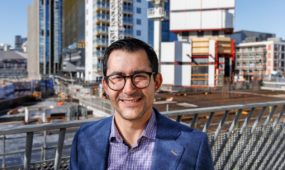Government supports faster, friendlier approach to dental imaging
Health & Medical
A FASTER, friendlier approach to dental x-rays is being developed by an Adelaide-based radiographer with support from the South Australian government.

Sign up to receive notifications about new stories in this category.
Thank you for subscribing to story notifications.
Manufacturing and Innovation Minister Susan Close said the potential to improve dental imaging being developed by local radiographer Don Chorley has been accepted into the Medical Device Partnering Program.
Support provided by the partnering program will assist Mr Chorley to integrate separate imaging components into one small device to improve outcomes for patients. This innovative approach also delivers a more targeted and faster x-ray process for specialised and general dentistry.
Dr Close said the partnering program run in association with Adelaide’s Flinders University brings together local innovators and public research organisations to develop commercially viable medical technologies.
“Mr Chorley will receive up to 250 hours of research and development assistance to advance his product idea through the partnering program,” Dr Close said.
“Commercialising medical innovation is a key element of this Government’s Manufacturing Works strategy.
“Through the Government and Flinders University, we are creating an avenue for innovators to explore opportunities to resolve technical problems at low cost and with reduced risk.
“The program supports the development of new, high-tech medical devices through collaboration between researchers, industry, end-users and government.
“By partnering with medical device companies, local supply chain manufacturers can diversify into new markets.
“It also helps underpin the state’s priority to transition to an advanced manufacturing industry through the development of niche, high-value products.
“The program is part of this Government’s commitment to establishing South Australia as a national centre for the development of medical device technologies.”
Mr Chorley said present day techniques in dental radiography are based on protocols and equipment developed before the Second World War.
“This has resulted in low quality images that take significant time to create, and potentially deliver a higher radiation dose than is necessary,” Mr Chorley said.
“Through this funding, I’m hoping to come up with a better solution for patients and practitioners alike.”
Further information on the Medical Technologies Program is available online here.
This story originally appeared in Bite Magazine. Read it here.
Jump to next article



